Hawaii’s Ke Ala Hele Makalae
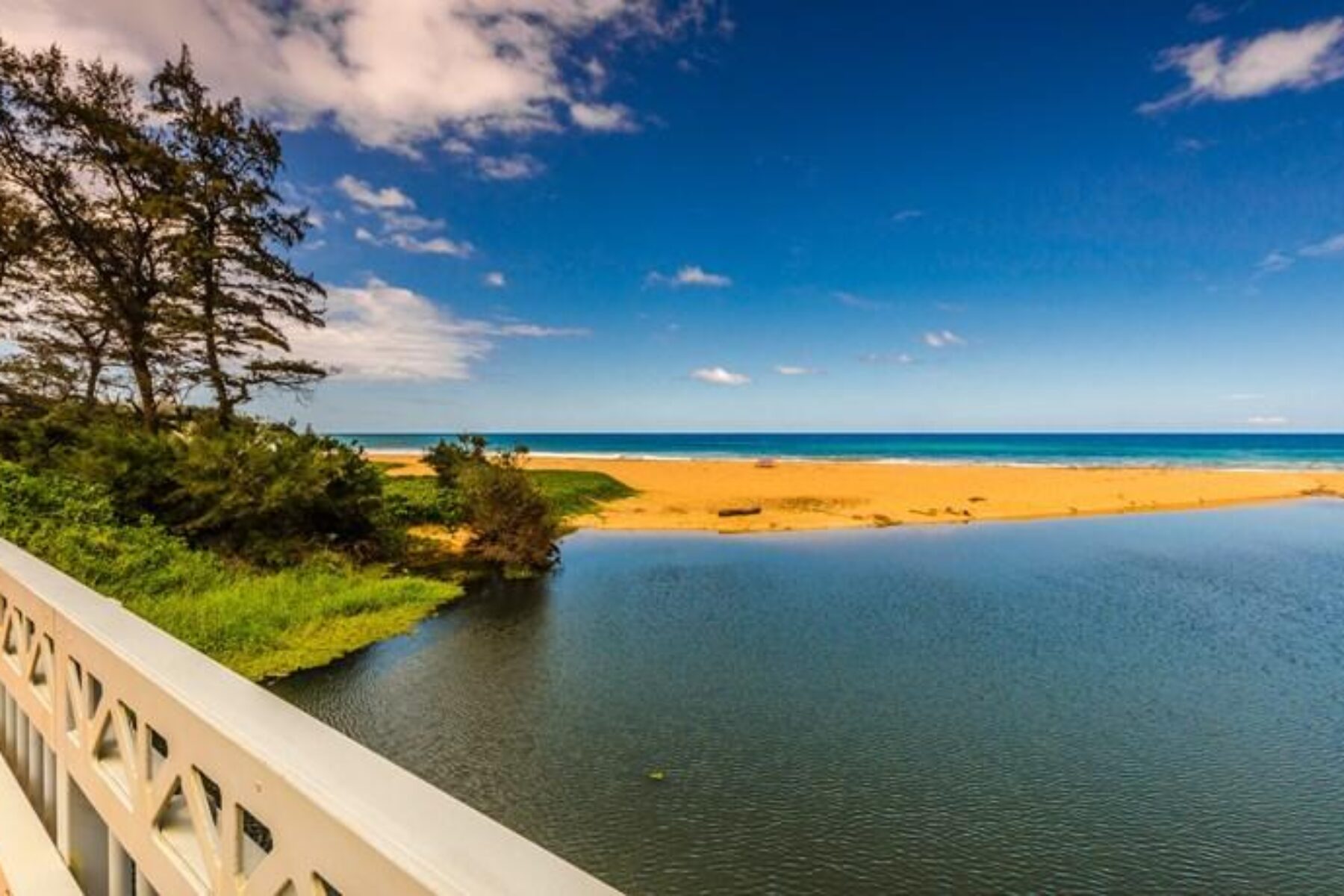
Trail of the Month: August 2016
“We tried for years to get men involved in our fitness programs. Who knew that all we had to do was build a trail?”
Kauai is picture perfect—literally. Hawaii’s “Garden Isle,” blanketed in emerald green rainforests and encircled with soft, sandy beaches has been featured in dozens of movies and TV shows. The dinosaurs of Jurassic Park, the monstrous beast of King Kong and the adventurous Indiana Jones have all roamed its mountainous terrain and mysterious jungles. Hugging the island’s Coconut Coast, the musical sounding Ke Ala Hele Makalae provides an easy way to experience a piece of this paradise in 7.3 miles of paved pathway along the eastern shoreline.
“I bicycle in a postcard!” exclaims Bev Brody, director of Get Fit Kauai, which promotes exercise and healthy eating on the island. “It is such a joyous sight; everywhere you look, there are people enjoying some part of the trail. I never get tired of it.”
What the rail-trail may lack in length, it more than makes up for in beauty, boasting endless blue expanses where the sky matches the sea, and the sights of whales breaching in the deep, monk seals lounging on the shoreline and seabirds darting above the waves.
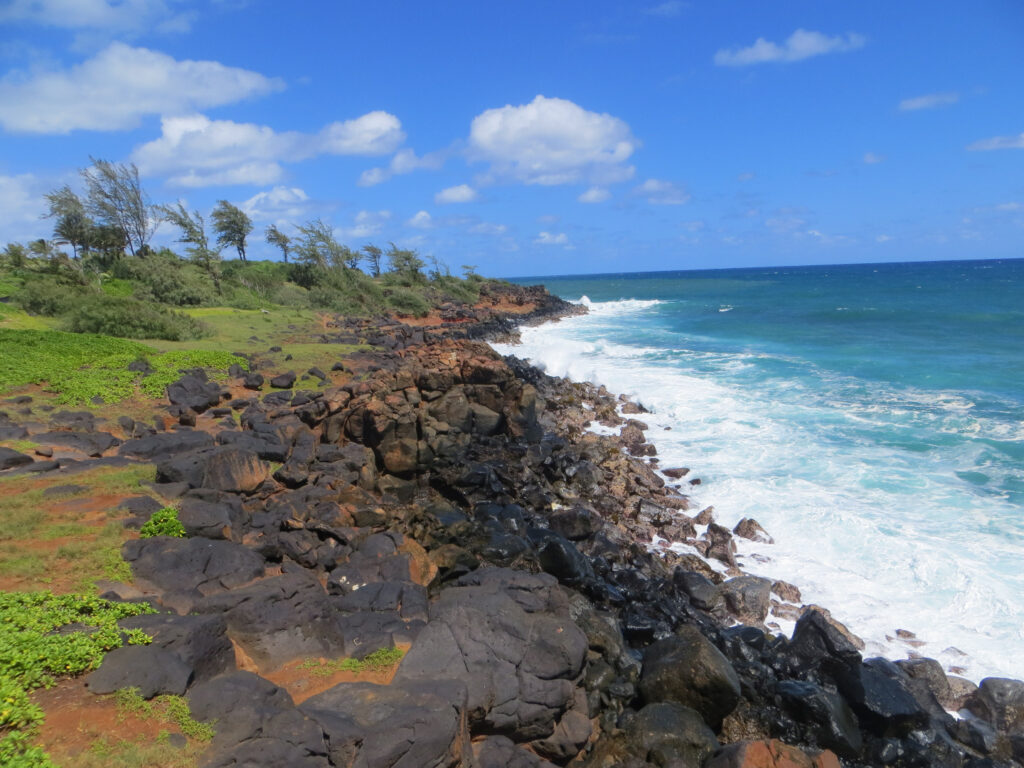
Protecting these natural assets for the public was the original push behind the rail-trail concept. In the 1990s, plantations from a once thriving agricultural economy were going defunct and selling off their lands, raising concern in local advocates about the potential loss of open access to the coastline. The trail project—partially built on a rail line formerly used to haul the island’s sugarcane crops—will one day extend 17 miles from Anahola on the northeastern shoreline to Nawiliwili, near the island’s more populated areas to the south, preserving the coastal corridor for residents and tourists alike to experience.
The island’s rich history is also captured and shared on nearly two dozen interpretive signs dotting the pathway. Travelers can learn about the archeological, cultural and historic sites along the way, the native names of streams and canals, the plants and animals that can be seen here, and many more topics unique to the area.
One of the highlights of the route is Lydgate Park, which houses two lagoons protected by a stone seawall offering calm waters for ocean swimming and snorkeling (making it a popular go-to place for families with young children), as well as picnic pavilions, tent campsites and a community-built playground, a small project that sparked the larger trail movement.
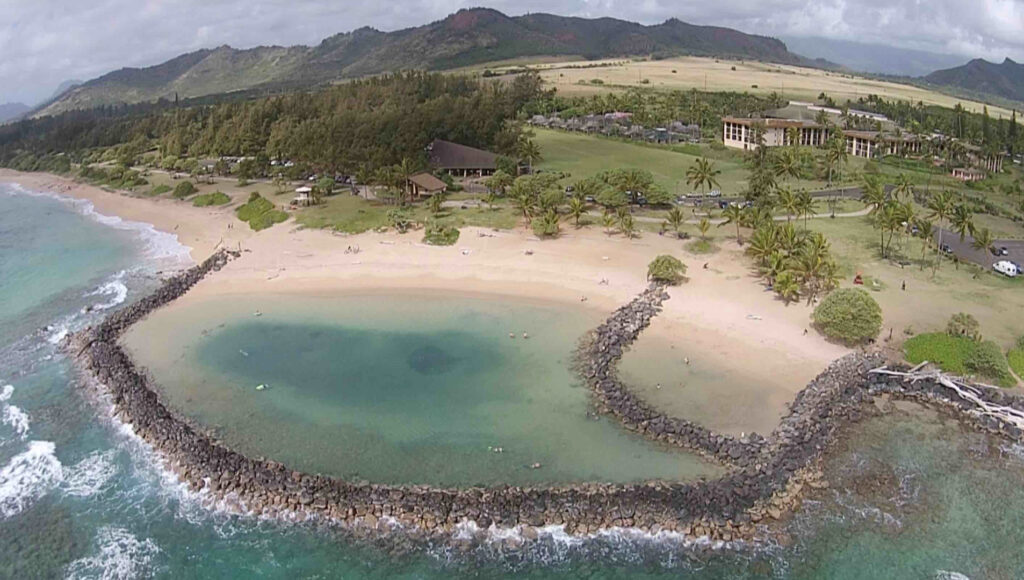
“In the middle of the path is Lydgate Park, and there had been a community group that built a playground there in 1993,” says Doug Haigh, the building division chief for the county’s department of public works, which is managing the trail’s construction. “That project created a strong group who adopted the park and wanted to do more. One of the things they wanted in the park was a bicycle and pedestrian path. Community volunteers put together a proposal, and our public works department adopted it and submitted it to the federal highway [administration] for funding.”
In addition to its recreational use, the trail, which loosely parallels Route 56 (also known as Kuhio Highway), has a practical purpose, too: providing an alternative to one of the island’s busiest roadways. The trail currently runs along a bustling area of Kapaa, which is well known for its shopping, eating and tourist destinations, and a future phase of the project will extend into Lihue, one of Kauai’s largest communities and home to the island’s seat of government and the airport.
“Kapaa has the worst traffic on the island any hour of the day,” says Brody, who often uses the trail to run errands, like trips to the grocery store. “Taking the trail is absolutely beautiful, and it’s way less stressful and takes less time than sitting in traffic.”
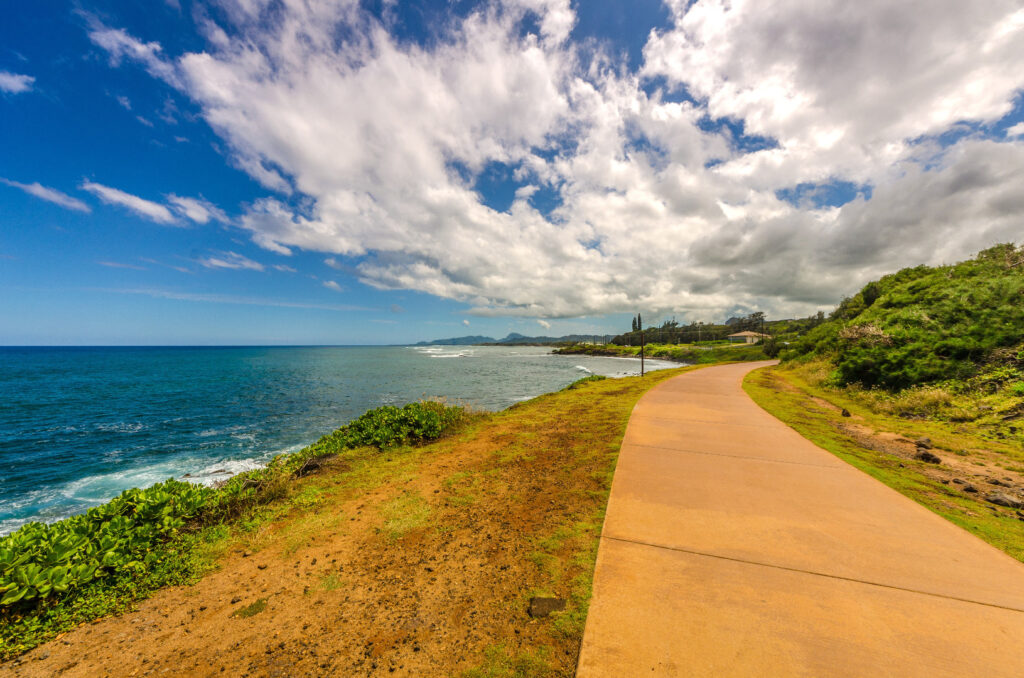
Momentum for improved walkability and bikeability is growing with the county receiving a $13 million TIGER grant from the U.S. Department of Transportation last fall, which it plans to use for bike lanes, sidewalks, shared-use pathways and other such projects in Lihue. And, next year, the Kawaihau District, a residential and commercial area perched on a steep hill, will be connected down to the coastal trail with an elevated boardwalk that is set to start construction this coming February, with labor provided by the National Guard.
Tommy A. Noyes, who helped build the Lydgate Park playground two decades ago, is excited about these new developments. Now the executive director for Kauai Path, Inc., a nonprofit organization which promotes the trail project, he notes that, “In order for the path to be integrated into the fabric of the community, it’s important to tie-in to the urban cores with complementary projects.”
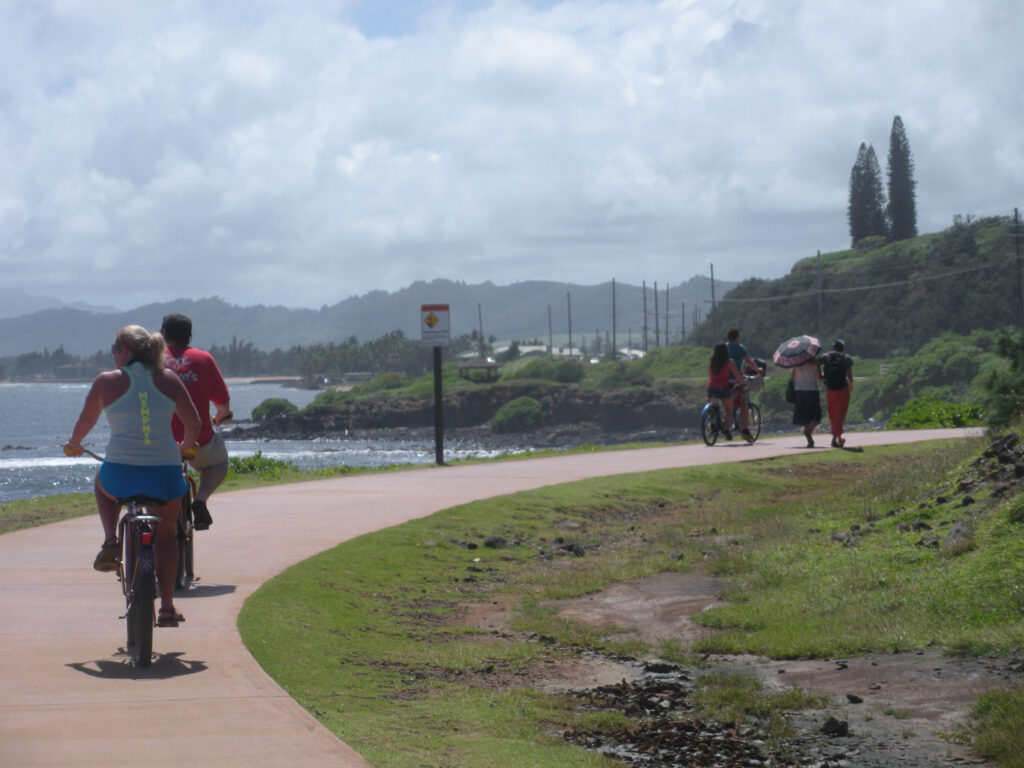
The Ke Ala Hele Makalae itself is broken into six phases of development, two of which are completed, but disconnected. The third phase to close the 2-mile gap between the two open trail segments is underway. The other phases of the trail may take years to complete, but there is strong local support for the project, including from Kauai’s mayor, Bernard P. Carvalho, Jr. The athletic mayor, formerly a Miami Dolphins player, leads a Mayor-a-thon on the trail each June, an event which Brody credits as helping to introduce many new people to the trail.
“It’s used so widely and, surprisingly, by a lot of men,” notes Brody. She adds with a chuckle, “We tried for years to get men involved in our fitness programs. Who knew that all we had to do was build a trail?”
Haigh agrees, “The full gamut of the community is out there using it. There really was no place to ride your bike; the trail has made a big difference.”

Donate
Everyone deserves access to safe ways to walk, bike, and be active outdoors.



